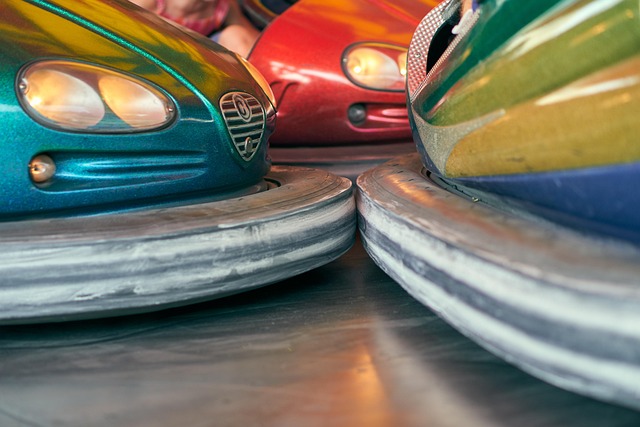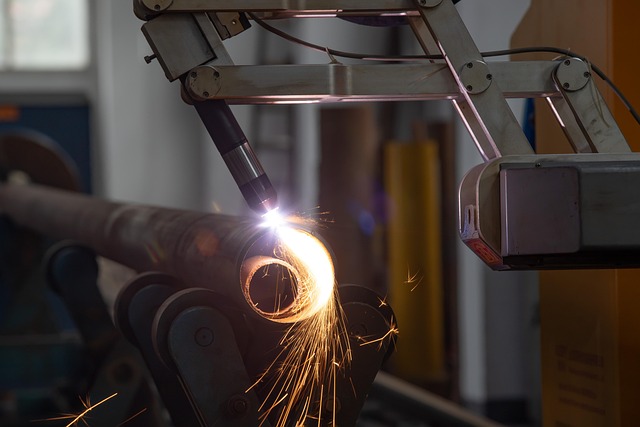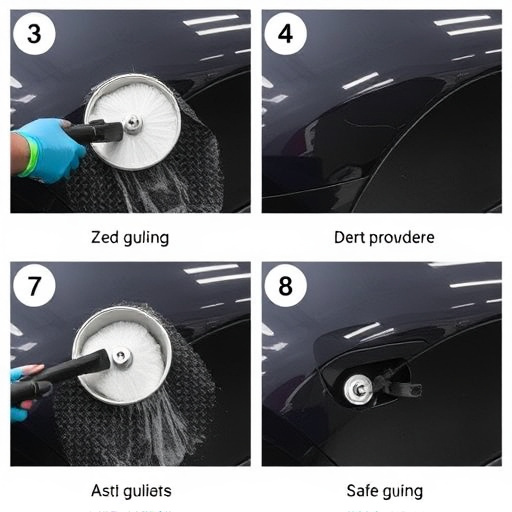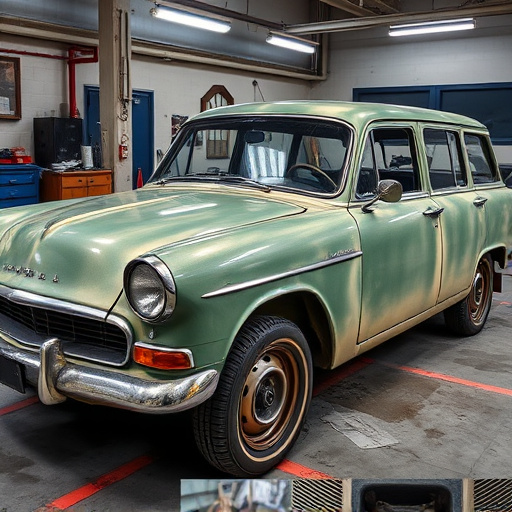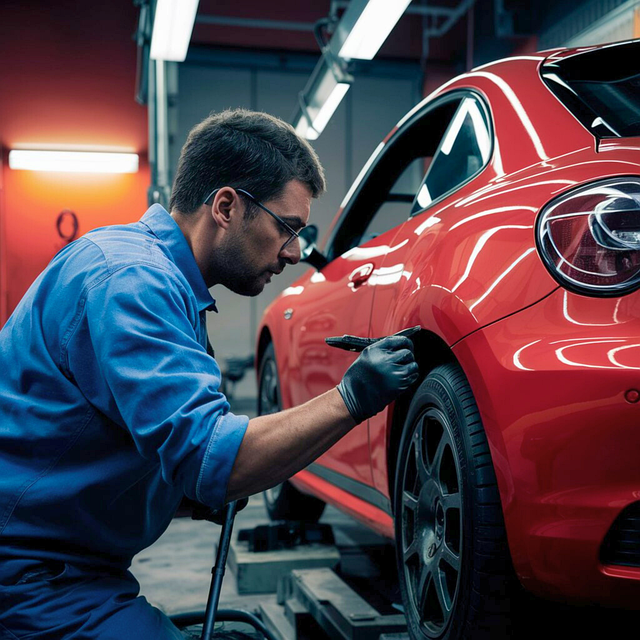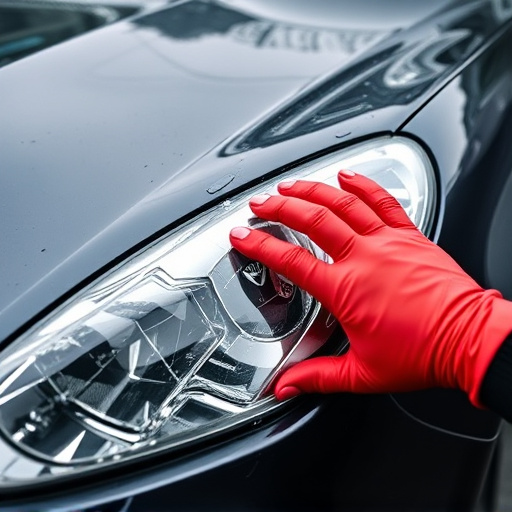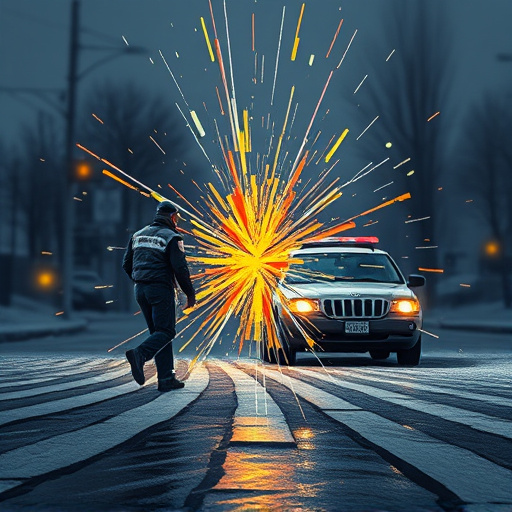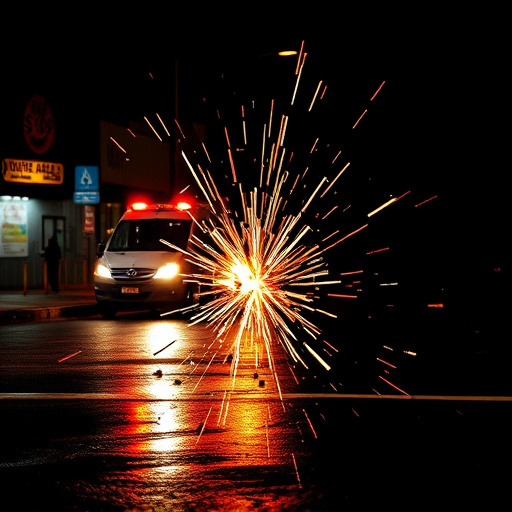Category: crossover vehicle repair
Crossover Vehicle Repair: A Comprehensive Analysis
Introduction
In an era defined by technological fusion and evolving consumer preferences, the automotive industry is undergoing a significant transformation. At the intersection of traditional vehicle manufacturing and innovative repair techniques lies ‘Crossover Vehicle Repair’—a dynamic discipline that promises to revolutionize how we maintain and service our vehicles. This article aims to dissect this emerging field, exploring its intricacies, global impact, economic implications, technological innovations, regulatory landscape, challenges, and future potential. By delving into these aspects, readers will gain a comprehensive understanding of why crossover vehicle repair is not just a niche concept but a game-changer in the modern automotive sector.
Understanding Crossover Vehicle Repair: Unlocking the Concept
Definition: Crossover Vehicle Repair (CVR) refers to the specialized process of repairing and maintaining vehicles that blend characteristics from both traditional cars and SUVs, known as crossovers. These vehicles offer a versatile driving experience, combining passenger comfort with increased cargo space and off-road capabilities.
Core Components:
- Hybrid Systems Integration: CVR involves mastering the repair and maintenance of hybrid powertrains, which combine internal combustion engines with electric motors for enhanced fuel efficiency and performance.
- Advanced Electronics: Modern crossovers are packed with sophisticated electronics, including infotainment systems, advanced driver-assistance systems (ADAS), and complex sensor networks. Repairing these systems requires a deep understanding of electrical engineering and software diagnostics.
- Sophisticated Suspension and Chassis: Crossovers often feature independent suspension systems and robust chassis designs to handle varied terrain. Ensuring the alignment, repair, or replacement of these components demands specialized knowledge.
- All-Wheel Drive (AWD) Systems: Many crossovers are equipped with AWD systems for improved traction. Repairs related to differentials, transfer cases, and driveline components require specific skills and tools.
Historical Context: The concept of crossover vehicles gained momentum in the early 2000s when automakers sought to cater to consumers’ desires for versatile vehicles. As fuel efficiency became a pressing concern, hybrid powertrains found their way into crossovers, further blurring the lines between car and SUV categories. With advancements in technology, CVR has evolved from a niche service to a critical aspect of vehicle maintenance.
Significance: The rise of crossovers has significantly impacted the automotive market, changing consumer expectations and driving innovation. As these vehicles become more complex, efficient, and technologically advanced, specialized repair services are essential to ensure optimal performance and safety. CVR bridges the gap between traditional car servicing and SUV repairs, offering a unique skill set required by modern vehicle owners.
Global Impact and Trends
Crossover Vehicle Repair has left an indelible mark on the global automotive landscape, with varying regional dynamics shaping its evolution:
| Region | Trends and Influence | Key Players |
|---|---|---|
| North America | Early adoption of crossover vehicles due to favorable consumer preferences and government incentives for fuel-efficient models. CVR services are well-established, with advanced training programs available. | Toyota, Ford, Honda (leading crossover manufacturers) |
| Europe | Stricter emission norms drive the development of hybrid and electric crossovers. The region has a robust network of specialized repair centers catering to popular European brands. | Volkswagen Group, Renault, Stellantis |
| Asia-Pacific | Rapid growth in SUV sales across emerging markets like China and India. Local automakers are focusing on CVR to meet demand for reliable and efficient crossover repairs. | SAIC Motor (China), Tata Motors (India) |
| Middle East & Africa | Increasing luxury vehicle ownership drives the need for specialized CVR services. The region’s harsh environmental conditions pose unique challenges for SUV maintenance. | Luxury car manufacturers like Mercedes-Benz, BMW have a strong presence |
These trends highlight the global nature of CVR, with each region contributing to its development and adoption based on unique consumer behaviors, regulatory environments, and technological advancements.
Economic Considerations: The Business Case for CVR
The economic aspects of crossover vehicle repair are multifaceted, impacting both the automotive industry and the wider economy:
- Market Dynamics: The global crossover vehicle market is projected to reach USD 461.7 billion by 2028, growing at a CAGR of 9.3% (Source: MarketWatch). This growth directly translates to increased demand for CVR services, presenting businesses with lucrative opportunities.
- Investment Patterns: Auto manufacturers are investing heavily in research and development to enhance crossover technology. This includes improving hybrid systems, lightweight materials, and advanced driver assistance systems. These investments drive the need for specialized repair capabilities, creating a viable market for CVR service providers.
- Economic Systems Impact: CVR contributes to local economies by supporting employment opportunities in auto repair shops, training centers, and related industries. It fosters skill development, enhances regional expertise, and stimulates economic growth through consumer spending on vehicle maintenance and upgrades.
Technological Advancements: Driving Innovation in CVR
Technological breakthroughs have been instrumental in shaping the future of crossover vehicle repair:
- Advanced Diagnostic Tools: The development of sophisticated onboard diagnostics and remote monitoring systems allows for precise identification of issues, reducing the time and cost of repairs. These tools enable mechanics to access real-time vehicle data, ensuring more accurate and efficient CVR.
- Electric Vehicle (EV) Integration: As the shift towards electrification gains momentum, CVR must adapt to cater to EV crossovers. This includes mastering the repair of advanced battery systems, high-voltage electrical components, and associated software systems.
- Autonomous Repair Technologies: Research is underway to develop semi-autonomous and fully autonomous repair equipment, promising increased efficiency, reduced labor costs, and improved safety for mechanics.
- Digital Twin Technology: The concept of digital twins, virtual replicas of physical vehicles, can revolutionize CVR by enabling simulation and testing of repairs before actual work begins, minimizing errors and optimizing processes.
Policy and Regulation: Navigating the Legal Landscape
The regulatory environment plays a crucial role in governing crossover vehicle repair, ensuring safety, environmental sustainability, and consumer protection:
- Emission Norms: Stricter emission regulations worldwide are driving the adoption of hybrid and electric crossovers. CVR service providers must stay updated with these norms to ensure vehicles comply with legal standards.
- Safety Standards: Organizations like NHTSA (U.S.) and ECE (Europe) set safety requirements for vehicles, including crossover models. Repairs must adhere to these standards to maintain vehicle integrity and occupant protection.
- Waste Management: Proper disposal and recycling of automotive components are essential due to the presence of hazardous materials. Regulations dictate how repair facilities handle waste, ensuring environmental responsibility.
- Training and Certification: Many countries mandate specific training and certification programs for mechanics engaging in CVR to ensure competent and safe repairs.
Challenges and Criticisms: Overcoming Barriers
Despite its numerous benefits, crossover vehicle repair faces several challenges that require strategic solutions:
- Specialized Training Needs: The complexity of modern crossovers demands specialized training for mechanics, which can be a significant barrier for small auto repair shops. Addressing this through comprehensive training programs and certifications can help bridge the skill gap.
- High Cost of Repairs: Advanced hybrid systems and EV components often come with premium pricing, making repairs more expensive. Transparent cost communication and promoting cost-effective solutions can mitigate this concern.
- Lack of Standardization: Different automakers have varying approaches to crossover design and technology, leading to challenges in developing universal repair procedures. Industry collaboration and standardized testing protocols can help overcome this issue.
- Public Awareness: Some consumers may be unfamiliar with the concept of CVR, potentially hindering service adoption. Educative campaigns and outreach programs can raise awareness, emphasizing the benefits of specialized crossover repairs.
Case Studies: Real-World Applications of CVR
Case 1: Toyota Prius – Hybrid Excellence
Toyota’s Prius, a pioneer in hybrid technology, showcases the intricacies of CVR. The successful repair and maintenance of the Prius’ complex hybrid powertrain require a deep understanding of both conventional internal combustion engines and electric motor systems. A case study from a leading auto repair chain highlights their approach:
- Challenge: A customer brought their 2018 Prius in for a rare issue with battery performance, affecting fuel efficiency.
- Solution: The team performed a thorough diagnostic, identifying a software glitch causing inefficient battery management. They updated the vehicle’s firmware, resolved the issue, and conducted a comprehensive hybrid system check.
- Outcome: The car returned to service with improved fuel economy and battery life, demonstrating the precision required in CVR.
Case 2: BMW X5 – All-Wheel Drive Precision
The BMW X5, a popular luxury crossover SUV, poses unique challenges due to its complex all-wheel-drive system. A specialized repair shop shares their experience:
- Scenario: A high-end X5 was brought in for an unusual driveline vibration at highway speeds.
- Diagnosis: Mechanics employed advanced diagnostic tools and road testing to isolate the problem, eventually pinpointing a faulty differential bearing.
- Repair: They sourced the specific replacement part, carefully replaced the bearing, and aligned the suspension to perfect driving dynamics.
- Result: The customer reported a seamless driving experience, highlighting the importance of AWD expertise in CVR.
Case 3: Tesla Model 3 – Electric Vehicle Evolution
With the rise of electric vehicles (EVs), repair shops are adapting to cater to new technologies. A leading EV repair center shares its journey:
- Mission: To become a go-to service provider for Tesla owners, they invested in EV training and specialized tools.
- Challenge: A Model 3 owner experienced rapid battery degradation, requiring advanced diagnostics to uncover the cause.
- Process: They utilized their electric vehicle diagnostic suite, identifying a software issue affecting battery management. The team updated the vehicle’s firmware, resolving the problem.
- Impact: This case study demonstrates the evolving role of CVR in addressing EV-specific repairs, ensuring customer satisfaction with cutting-edge technology.
Future Prospects: Mapping Out the Roadmap
The future of crossover vehicle repair holds immense potential, shaped by emerging trends and technological innovations:
- Electric Vehicle Dominance: As EVs gain market share, CVR will need to expand its capabilities to handle a diverse range of electric powertrains. This includes mastering battery pack repairs, high-voltage systems, and software updates.
- Autonomous Vehicles: The integration of autonomous driving technology into crossovers will require advanced diagnostic and repair skills. Mechanics will collaborate with AI systems to ensure safe and efficient vehicle operation.
- Connected Cars: With the rise of connected crossover vehicles, CVR professionals will play a pivotal role in ensuring secure data transmission, remote diagnostics, and over-the-air software updates.
- Sustainability Focus: Environmental sustainability will be a key focus, with emphasis on eco-friendly repair practices, recycling initiatives, and the development of sustainable materials for vehicle components.
- Global Standardization: Industry efforts to standardize crossover design and repair procedures will gain momentum, making it easier for mechanics worldwide to stay updated and provide consistent service quality.
Conclusion: A Catalyst for Automotive Innovation
Crossover Vehicle Repair is not just a niche service; it is a transformative force in the automotive industry, driving innovation, enhancing safety, and catering to evolving consumer needs. As crossovers continue to dominate the market, CVR will become increasingly critical in ensuring optimal vehicle performance and longevity. The global impact, technological advancements, and regulatory landscape all point towards a vibrant future for this specialized field.
By addressing challenges, embracing new technologies, and fostering collaboration between automakers, repair shops, and training institutions, crossover vehicle repair can reach its full potential. This article has provided a comprehensive overview, serving as a valuable resource for industry professionals, educators, and enthusiasts alike, who seek to navigate the dynamic world of CVR.
FAQ Section: Answering Common Queries
Q: What sets crossover vehicle repair apart from regular car repair?
A: Crossover vehicles have unique hybrid powertrains, advanced electronics, and specialized suspension systems. CVR professionals are trained to handle these complexities, ensuring efficient and safe repairs tailored to crossovers’ specific needs.
Q: Are there any safety concerns associated with repairing electric vehicle (EV) crossovers?
A: EV repairs require stringent safety protocols due to high-voltage systems. Proper training and specialized tools ensure mechanics can safely work on EVs, minimizing risks. Regular maintenance and updates also play a crucial role in maintaining EV safety.
Q: How can I find a qualified crossover vehicle repair shop?
A: Look for shops with certified CVR technicians, modern diagnostic equipment, and experience with your crossover’s make and model. Online reviews and recommendations from automotive forums can be valuable resources. Reputable auto manufacturers often have recommended service centers.
Q: Can crossover vehicle repair help reduce my car’s carbon footprint?
A: Absolutely! CVR professionals can optimize vehicle performance through efficient repairs and maintenance, reducing fuel consumption and emissions. Additionally, staying up-to-date with the latest eco-friendly technologies contributes to a greener automotive sector.
Q: What are some signs that I need to take my crossover for specialized repair?
A: Unusual noises, drivability issues, battery problems (in hybrid/EV models), or warning lights on your dashboard are indicators. If your vehicle’s performance deviates from its usual behavior, it’s wise to consult a CVR expert.
Mastering Crossover Vehicle Repair Techniques and Architecture
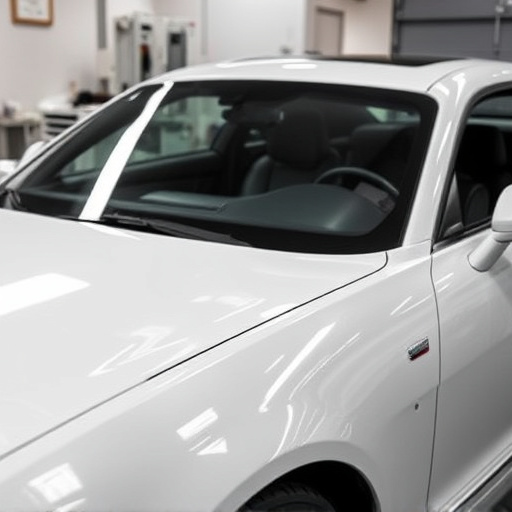
Crossover vehicle repair poses unique challenges due to their complex design and safety features. Ac…….
Mastering Crossover Vehicle Repair: Architecture to Effectiveness
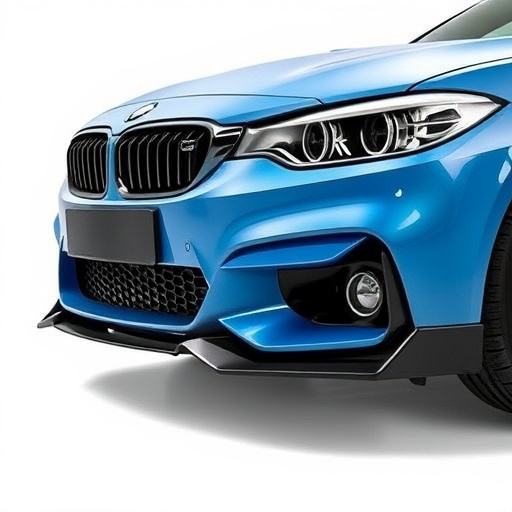
Specialized knowledge is required for crossover vehicle repair due to their unique design and featur…….
Mastering Crossover Vehicle Repair: Enhancing Safety and Performance
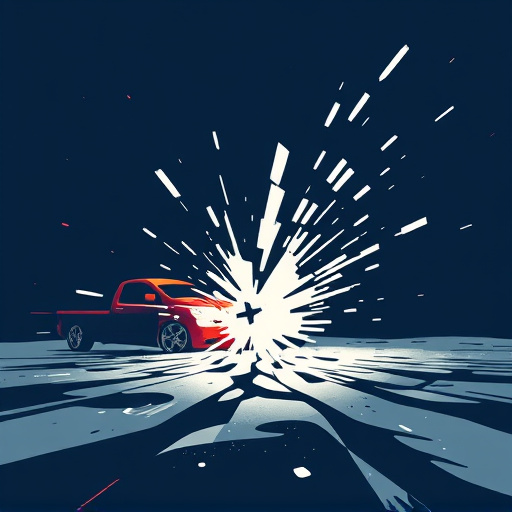
Crossover vehicle repair services cater to the unique needs of these popular cars, offering speciali…….
Mastering Crossover Vehicle Repair: Tips for Success
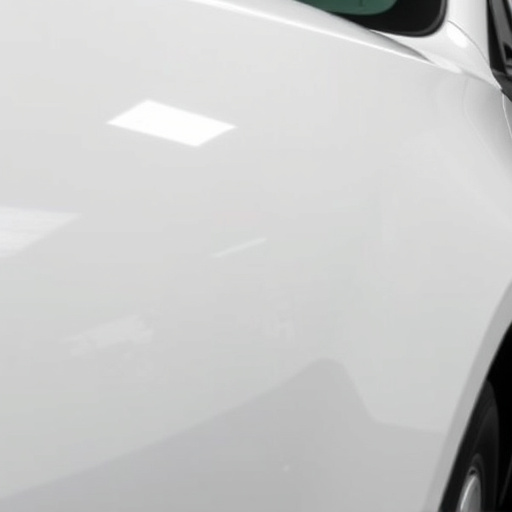
Crossover vehicle repair requires a comprehensive understanding of integrated systems and their inte…….
Mastering Crossover Vehicle Repair: Tips and Insights
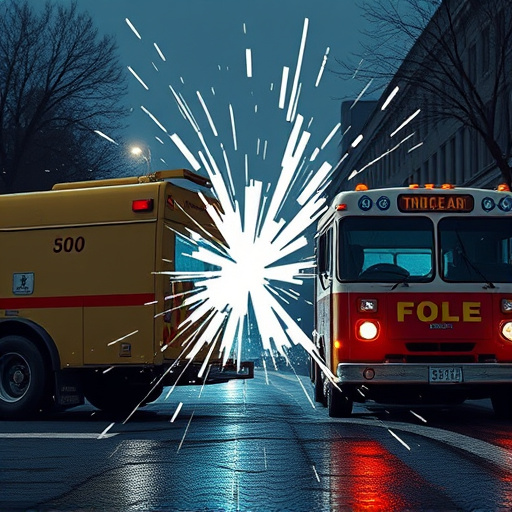
Crossover vehicle repair requires specialized knowledge and tools due to their unique construction a…….
Unlocking Efficiency: Expert Crossover Vehicle Repair Benefits
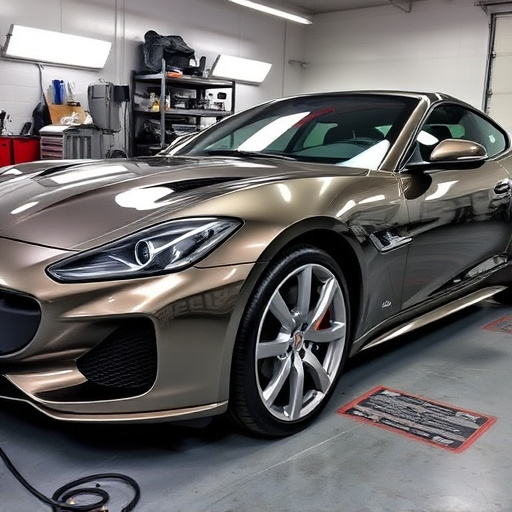
Crossover vehicle repair requires specialized knowledge and techniques due to unique designs. Choosi…….
Timely Crossover Vehicle Repair: Save Money, Stay Safe, Optimize Performance
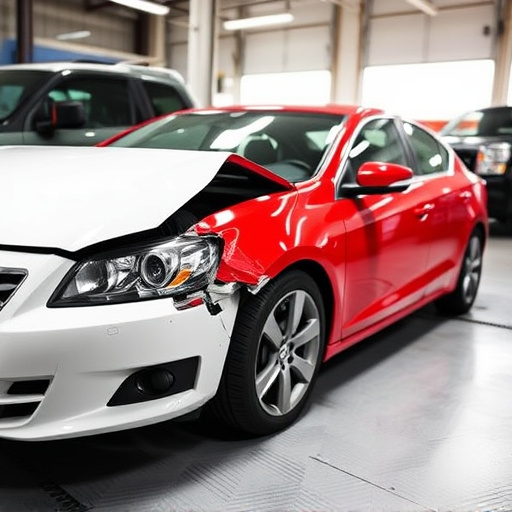
Regular crossover vehicle repair services save costs and time by preventing breakdowns through early…….
Mastering Crossover Vehicle Repair: Common Issues to Future Trends
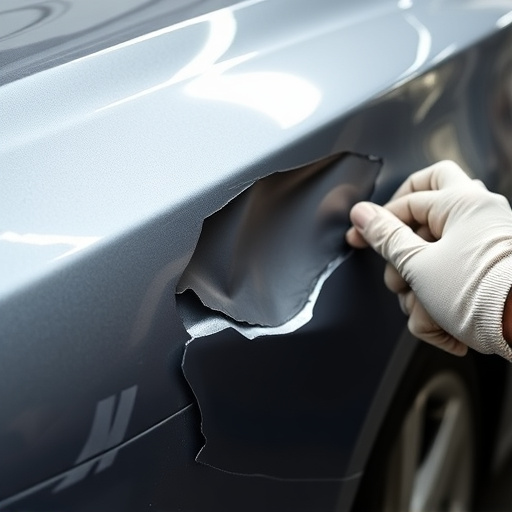
Crossover vehicle owners should be proactive with maintenance to mitigate structural issues and pres…….
